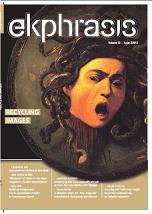Adaptation as a Means of Refl ecting upon Immersivity and Self-Referentiality
Adaptation as a Means of Refl ecting upon Immersivity and Self-Referentiality
Author(s): Liviu LutasSubject(s): Theatre, Dance, Performing Arts
Published by: Universitatea Babeş-Bolyai, Facultatea de Teatru si Televiziune
Keywords: Adaptation studies; Greenaway; Fforde; Black Venus; immersion; self-reflexivity; intermediality
Summary/Abstract: In this article, I apply parts of the method introduced by Linda Hutcheon in her recently reedited book A Theory of Adaptation (2010) and try to answer the question “why” an adaptation is made. I particularly study three complex cases of adaptation, which might even put into question the canonical definition of adaptation itself, but I concentrate on aspects related to immersion and self-referentiality. All these examples, which are Jasper Fforde’s novel The Eyre Affair (2001), Abdellatif Kechiche’s film Black Venus (Vénus noire, 2010) and Peter Greenaway’s film Goltzius and the Pelican Company (2012), address the above mentioned aspects in interesting and ingenious manners. In Fforde’s novel, the shift of genres permits a narratively advanced game with the reader’s possible immersion in the world of fiction, challenging and broadening thus theories of reader’s involvement or immersivity. In Black Venus and Goltzius and the Pelican Company, the shift of media and the residual presence of the source medium in the adapting medium offers the possibility of accomplishing subtler, but quite as daring games with the immersivity and self-referentiality of the source text as in The Eyre Affair. In Kechiche’s film, the reaction of the audience is presented. In Goltzius and the Pelican Company there is one more level, which permits self-referential reflections on the adapted product itself and on the act of its reception. However, despite the differences between them, all these three examples illustrate the possibility to include theoretical reflections in artistic works, dissolving thus the difference between theory and practice (cf. Kamilla Elliot).
Journal: Ekphrasis. Images, Cinema, Theory, Media
- Issue Year: 10/2013
- Issue No: 2
- Page Range: 110-124
- Page Count: 15
- Language: English

